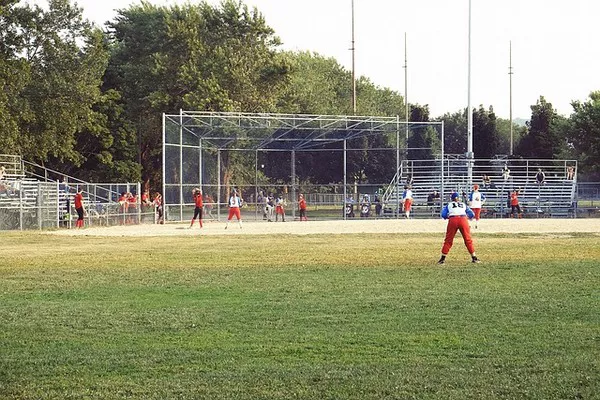Baseball, often dubbed America’s favorite pastime, is a sport rich in tradition and history. Central to the game is the baseball itself, a meticulously crafted sphere that serves as the focal point of every play. While casual observers may view it simply as a ball, the construction and materials of a professional baseball are surprisingly complex and purposeful. Understanding what goes into making these iconic spheres can deepen appreciation for the game and shed light on the craftsmanship behind each pitch and catch.
Materials Used in Professional Baseballs
Core Materials:
At the heart of every baseball lies its core, which primarily determines its performance characteristics. Professional baseballs traditionally feature a core made of cork, rubber, or a mixture of the two. These materials provide the necessary density and resilience to ensure the ball maintains its shape and performs predictably during play.
Cork: Often used due to its lightweight yet durable nature, cork cores are typically wrapped tightly with rubber layers to enhance resilience and rebound.
Rubber: Rubber cores, either synthetic or natural, offer consistent performance and are favored for their uniformity and reliability in flight.
Yarn Winding:
Surrounding the core is a critical layer of yarn, typically made from wool or a blend of wool and synthetic fibers. This winding process is meticulous, with each baseball requiring precisely wound layers to ensure consistent weight distribution and shape retention.
Wool Yarn: Traditionally used for its resilience and moisture-wicking properties, wool yarn provides the baseball with a cushioning effect that contributes to its bounce and feel.
Synthetic Blends: In modern manufacturing, blends of synthetic fibers such as polyester are sometimes used to enhance durability and performance in varying weather conditions.
Cover Materials:
The outermost layer of a baseball, known as the cover, plays a crucial role in grip, durability, and overall aesthetics. Professional baseballs are typically covered with leather, specifically cowhide sourced for its durability and consistent texture.
Cowhide Leather: Chosen for its toughness and suppleness, cowhide leather undergoes rigorous processing to achieve uniform thickness and texture. The tanning process ensures that the leather is water-resistant and capable of withstanding the wear and tear of professional play.
Stitching: The stitching on a baseball is not just for aesthetics but serves a functional purpose. Traditionally done by hand, the stitching uses waxed cotton thread to secure the cover tightly to the yarn layers underneath, ensuring durability and minimizing seam wear during play.
The Manufacturing Process
The creation of a professional baseball involves a series of precise steps that combine craftsmanship with technological precision:
Core Formation:
Molding: Cores are molded into shape using specialized machinery to achieve uniform density and weight.
Layering: Multiple layers of cork and rubber are often compacted together and shaped into a sphere, ensuring consistency across batches.
Yarn Winding:
Automated Winding Machines: Yarn winding is typically automated to ensure precise tension and layering. Each ball requires a specific number of yarn layers to achieve the desired weight and bounce characteristics.
Quality Control: Throughout the winding process, quality checks are performed to verify weight and circumference, ensuring adherence to league standards.
Cover Application:
Cutting: Cowhide leather is cut into precise panels that will cover the baseball. Each panel is carefully selected to minimize imperfections and maintain uniformity.
Stitching: Skilled artisans or specialized machines then hand-stitch or sew the panels together using tightly spaced stitches, ensuring the cover is securely attached to the yarn layers.
Finishing Touches:
Stamping: Each finished baseball is stamped with league logos, manufacturer information, and sometimes specific game-use designations.
Quality Assurance: Final inspections assess factors such as seam tightness, weight, and overall appearance to meet the stringent requirements of professional baseball leagues.
Evolution and Innovation
While the basic construction of a baseball has remained relatively unchanged for decades, ongoing innovations in materials and manufacturing techniques continue to refine its performance:
Alternative Cores: Experimentation with composite cores and advanced polymers seeks to enhance durability and consistency in flight characteristics.
Cover Treatments: Surface treatments and coatings are being explored to improve grip and water resistance, particularly in inclement weather.
Environmental Considerations: Efforts are underway to explore eco-friendly materials and manufacturing processes without compromising performance or tradition.
See Also What Brand Baseball Does Mlb Use
Conclusion
The humble baseball, with its deceptively simple appearance, embodies a blend of tradition, craftsmanship, and technological innovation. From the carefully selected leather cover to the precisely wound yarn layers and resilient core, every component serves a specific purpose in shaping the ball’s performance on the field. As baseball continues to captivate audiences worldwide, understanding the intricacies of its iconic sphere adds depth to the appreciation of the game and the dedication of those who manufacture the balls that define it.


